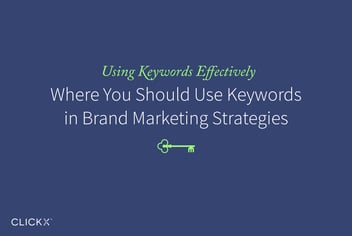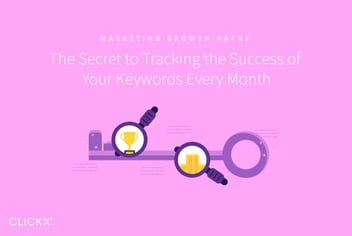Why Today’s Keywords Aren’t What They Used to be 5 Years Ago
Ask any PPC manager or SEO analyst and they’ll probably both tell you that a successful campaign revolves around keywords. Targeting the right keywords, whether in you paid or organic strategy is fundamental to the overall effectiveness of your investment.
However, the notion of keywords has changed a lot over the past five years. Even the last two years. And that’s something everyone, even clients have to wrap their heads around.
So what has changed?

The Old Way of Looking at Keywords
When anyone discussed keywords then it was all about the “money” keywords. Yes, the short-tail, broad keywords. Having the highest search volume, these “money” keywords promised a big return – more traffic. And that led to the race to number one. Higher bids on Google’s AdWords platform, stricter algorithm ranking factors, and an overflow of over-optimized, lack-luster content.
But much has changed over the past few years.
The New Way of Looking at Keywords
If you focus hasn’t expanded beyond “money” keywords, you might just be losing out some great opportunities. Keywords today have evolved into much more than a simple string of words.
Here’s what everyone should be thinking about when talking keywords today:
Long-tail keywords are more valuable
Unlike short-tail, “money” keywords, long-tail keywords have significantly lower search volume. From my experience talking to clients, long-tail keywords aren’t all that exciting. I often get the following question when discussing keywords with clients: “But why would I want to spend time and energy on long-tail keywords with such low potential when I could dedicate my time and money on keywords I know thousands of people are searching for?” Tough question. Long-tail keywords are highly targeted and are the low-hanging fruit that gives you more bang for your buck. They tend to be cheaper in CPC and easier to optimize for.
New searches are growing daily
Here’s a fact that clients and business owners have to understand: approximately 15% of daily searches on Google are completely new.
That means that there are tons of new keywords being used that you may have never planned for. Hence, your keyword strategy is not set and done. It grows, expands and changes over time.
New search capabilities are changing the game field
If new searches weren’t enough, add to that new ways to search like OK Google, Apple’s Siri and Amazon’s Alexa, and the entire keyword plan is turned on its head. Advances in technology like these are changing the way people search for content and products on the Internet.
User intent is more focused
If keywords are changing, so are the intentions of users. Consider the following two keywords: dentist vs. pediatric dentist in Chicago. Which do you think comes from a user looking for dental services? By narrowing down the type of dental specialty and location, the second user is much more likely to be in the market for a new dentist than the first one.
Search intent is tied to buyer’s journey
Longer search phrases determine user intent and allow marketers and business owners to better serve these users. How? Analyzing the types of searches people are doing, it’s easy to identify where in the buyer’s journey that searcher may be. And that gives marketers and business owners the upper hand in providing just the right information they need to capture the users attention. Analyze these two search queries: “best DSLR cameras” and “Nikon D500 vs. Canon 7D Mark II”. The first search is not very specific but given that the user is using “best” in their search, they’re most likely in the research or consideration phase of the buyer’s journey. In the second search, given that the user is comparing two products, they’re most likely in the decision stage of the buying cycle – almost close to making a final decision.
Understanding where the user is in the buying cycle plays a big role in creating the right content and offer to convert that searcher into a customer.
Embracing the New Look of Keywords
If you’ve been running PPC campaigns or SEO campaigns for more than five years, you probably have noticed a shift in keyword strategies. However, many business owners are still under the misconception that one target keyword is all that their campaign needs.
Regardless of whether you’re doing paid or SEO, your keyword strategy needs to incorporate keywords from all angles – short, long, bottom of funnel, middle of funnel and top of funnel. That’s what a truly comprehensive keyword strategy calls for. So what will your keyword strategy look like in 2016 and beyond?






